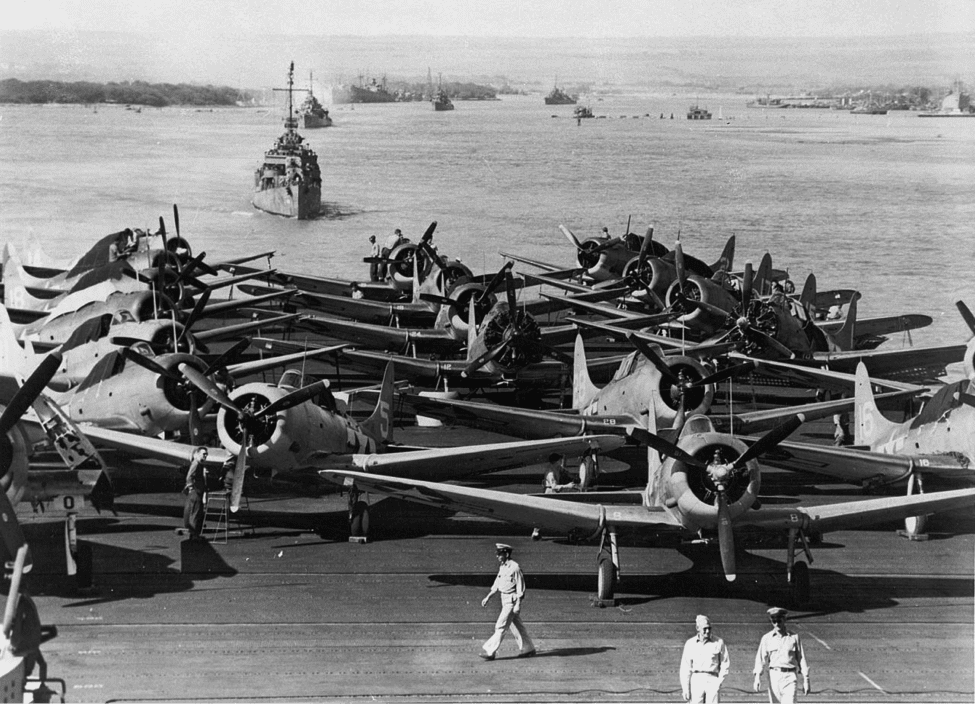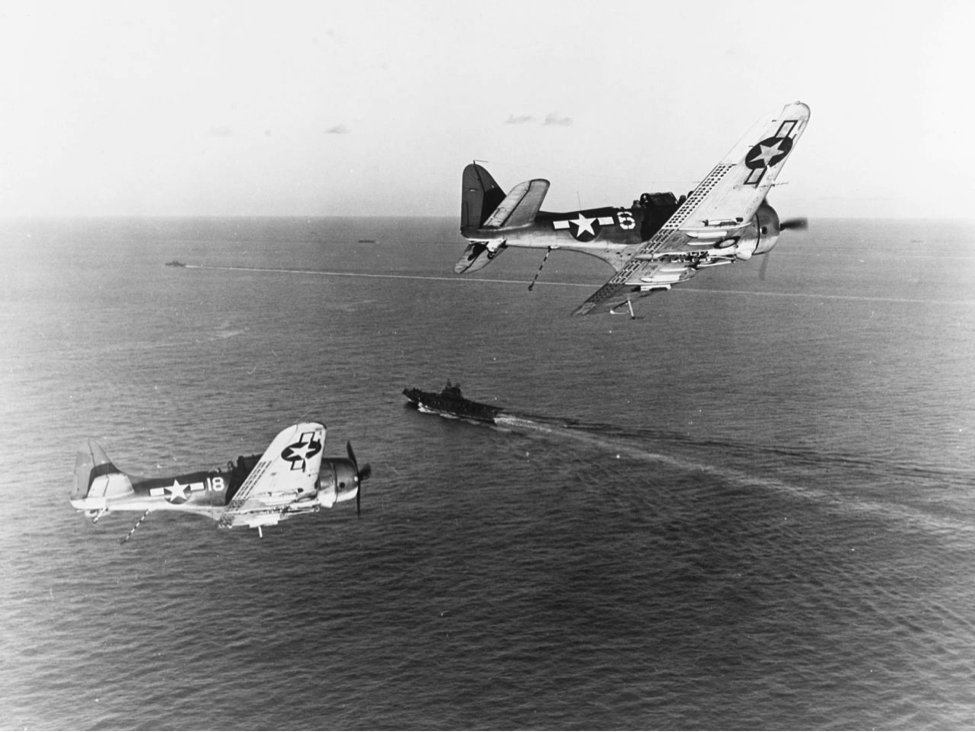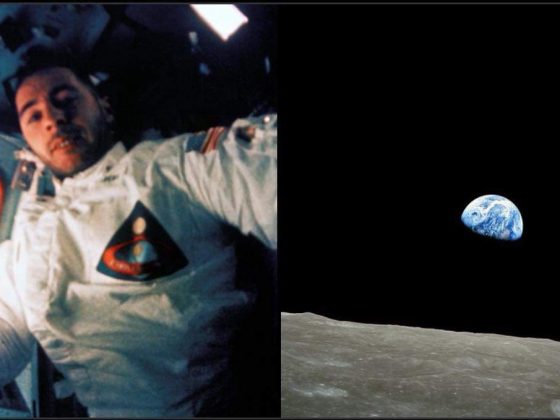This Douglas Dauntless Dive Bomber Made Blow But Deadly WORK.
On May 1st 1940 the Douglas SBD Dauntless flew for the first time. The SBD would go on to fight in virtually every naval engagement in the Pacific, sink more Japanese tonnage than any other American carrier-based aircraft, and often bring its crews back to their carriers after suffering fearful damage. According to legend the S-B-D stood for Scout Bomber Douglas but the crews referred to them as “Slow But Deadly.” Slow perhaps. But deadly indeed.
Roots of a Family Tree
The SBD really owes its origins to the Northrop BT-1 dive bomber design begun in 1935. Douglas aircraft took control of Northrop in 1937. The BT-1 went into service in 1938. Douglas designer Ed Heinemann let the team that redesigned the landing gear and strengthened the airframe of the BT-1 to accept a larger and more powerful Wright R-1820 Cyclone engine. This new design was the Douglas entry for a new Naval Bureau of Aeronautics (BuAer) dive bomber proposal. Today you know this aircraft as the SBD Dauntless.

First in Service
The first squadrons to receive the SBD-1 Dauntless were Marine Corps outfits Marine Bombing Squadron (VMB)-2 Red Devils during late 1940 and VMB-1 Crying Red Asses (you can’t make this stuff up) during early 1941. By the end of 1941 SBD-2s were flying with Navy Bombing Squadrons (VB)-6 aboard the USS Enterprise (CV-6) and VB-2 aboard the USS Lexington (CV-2).

Scouting and Bombing
At the beginning of the war squadron numbers matched up with the carrier numbers. VB-3 and Scout Bombing Squadron (VS)-3 were assigned to USS Saratoga (CV-3). VB-5 and VS-5 were assigned to USS Yorktown (CV-5). Each carrier eventually embarked both a VB and a VS squadron, both flying Dauntlesses and with interchangeable missions. This meant that during the first year of the war more than half of the aircraft aboard American carriers were SBDs.

The Banshee Wails
By the time 1941 was heading toward its conclusion and a world war, Navy Scout Bombing (VS) and Dive Bombing (VB) squadrons were flying SBD-3s equipped with better armor protection, self-sealing fuel tanks, and additional firepower. Marine Scout Bombing squadron and (VMSB) and VMB squadrons were flying Dauntlesses at the time as well. The Army Air Corps also ordered 948 of the Douglas dive bombers, but designated them A-24s and called them Banshees. Many of these Banshees fought alongside the ragtag group of American forces trying to slow the Japanese advance toward Australia during the opening months of the war.

Evolving and Improving
The most produced model of the SBD was the SBD-5, equipped with a more powerful engine and additional ammunition carrying capacity. Many of the -5s were built in Tulsa in Oklahoma. The final production version of the Dauntless was the SBD-6. The fact is Douglas incrementally made minor modification to SBDs many times without changing the variant designation. SBD fuel capacities, ranges, and payloads increased with every new variant introduced. Of the 5,936 SBDs produced by Douglas, more than 2,400 of them were SBD-5s. The very last SBD was rolled out of the factory in El Segundo in California on July 21st 1944.

Friendly Fire and Raiding With Halsey
The Japanese destroyed a large number of SBDs on the ground when they attacked the various air fields around Pearl Harbor on December 7th. Jittery American gunners shot down or damaged several more when the aircraft carrier USS Enterprise (CV-6) returned from its cruise and sent them ashore. An SDB from the Enterprise was the first American aircraft to sink a Japanese combatant, the Japanese submarine I-70 on December 10th 1941. During the first several months of the war Dauntlesses participated in Admiral Halsey’s raids on several Japanese outposts in the Marshall and Gilbert Islands, New Guinea, Wake, and Marcus Islands. These raids did little real damage to the Japanese but they did provide crews with experience that would pay off during the pivotal battles fought at the Coral Sea and Midway.

The First Battle of Its Kind
Two American carriers, the USS Lexington (CV-2) and the USS Yorktown (CV-5) and their task groups went up against the Japanese carriers Shokaku, Zuikaku, and Shoho in the Battle of the Coral Sea. Fought between May 4th and May 8th 1943, it was the first battle fought between combatant ships that attacked each other entirely beyond the horizon with aircraft only. SBDs sank the Shoho and badly damaged the Shokaku, preventing her from participating in the next fracas: The Battle of Midway.










